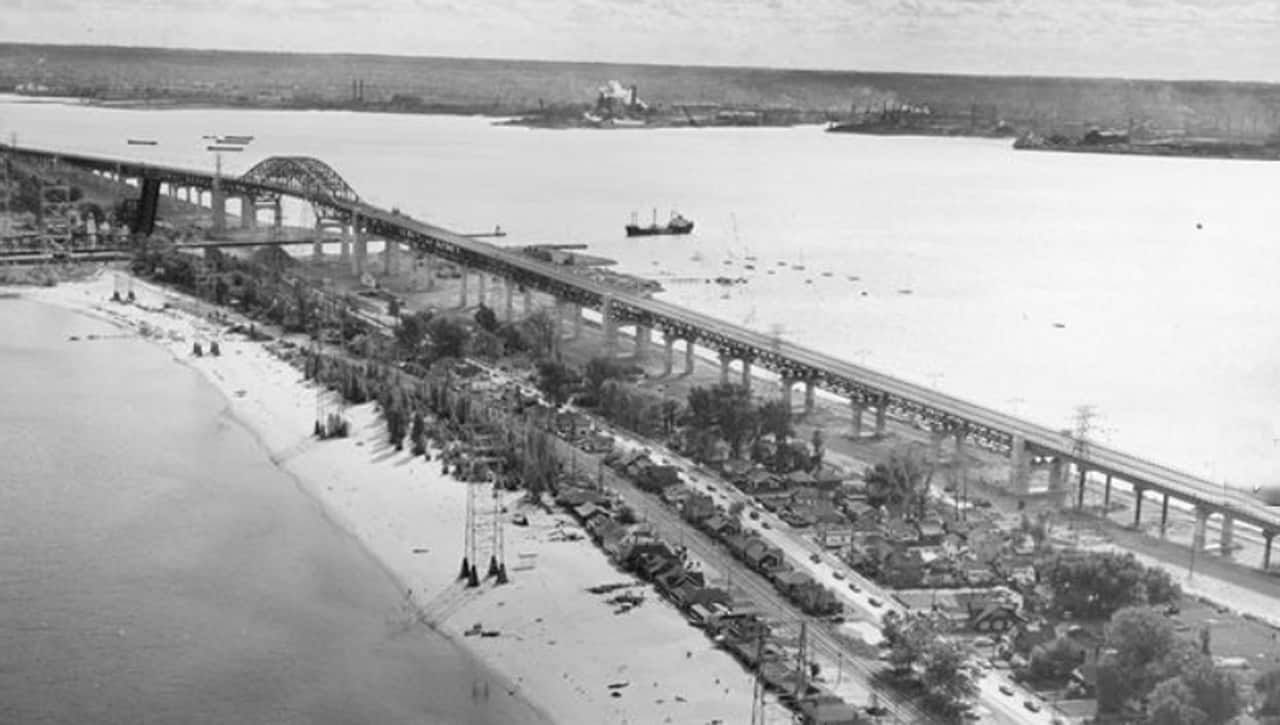Photos: 50 years ago drivers stopped paying the toll on the Burlington Skyway
Published December 1, 2023 at 5:39 pm

It’s rare when a government says you no longer have to pay a tax but that’s exactly what happened 50 years ago in Burlington.
In December of 1973, after years of forcing drivers to pay up to use, the Ontario government closed down the collection booths and no longer asked drivers to pay a toll to cross the Burlington Skyway.
It was a big deal at the time.

A worker prepares to remove the automated toll basket and one of the new “human” collectors takes over (Hamilton Historical Commission photo).
Save for a few weeks at the beginning, the collection booths had existed on the bridge since it opened in 1958.
Those with long memories will recall having to stop to throw a token into a bucket but when too many drivers missed their mark that system was replaced by living collectors who stuck out their hands to receive the coins.
For families on their way to and from Niagara Falls the diversion on the crest of the Skyway provided a brief opportunity to enjoy the view across Hamilton Harbour and to take in what stood before them on the structure that was then Canada’s longest bridge.
But for commuters and truckers, the congestion caused by the stop was a daily nuisance if not an expensive one. The fees ranged from 15 to 45 cents depending on the size of the vehicle, small amounts by today’s standards, but costly in the days when the minimum wage was $1.50 an hour.
“My father was a truck driver and he cursed every day having to pay that 45 cents,” says Rick Downey who lived in the shadow of the bridge in the 1960s. “Because of the bridge, they didn’t want trucks to use any other routes so you had to cross it. If you did it a couple of times a day it would make a dent in your wage.”

The toll booths at the crest of the bridge
Still, the bridge proved to be necessary as it became a key component of the QEW that linked Toronto to the Niagara area allowing for the efficient flow of traffic to the United States and relieving the bottlenecks that previously occurred along the Beach Blvd. to get across the bay.
Ultimately, the bridge became too successful and by the mid-70’s there were calls for an expansion.
The original structure, built at a cost of $19 million, was expected to handle 50,000 vehicles a day with two lanes going in each direction. But soon the numbers more than doubled which led to the second bridge, built in 1985 for $42 million.
But back to the elimination of the tolls.
There are two versions of why they were taken out.
The version that was popular at the time was that the bridge was now fully paid for and the money was no longer needed. The other is that the traffic chaos and delays for motorists caused by the toll collection were becoming too much of a headache for politicians to deal with.
For drivers, the reason didn’t matter. The tolls were gone and although traffic often continued — and continues — to be a nightmare on the Skyway, you no longer had to pay for the privilege to get to where you were going.

toll token






